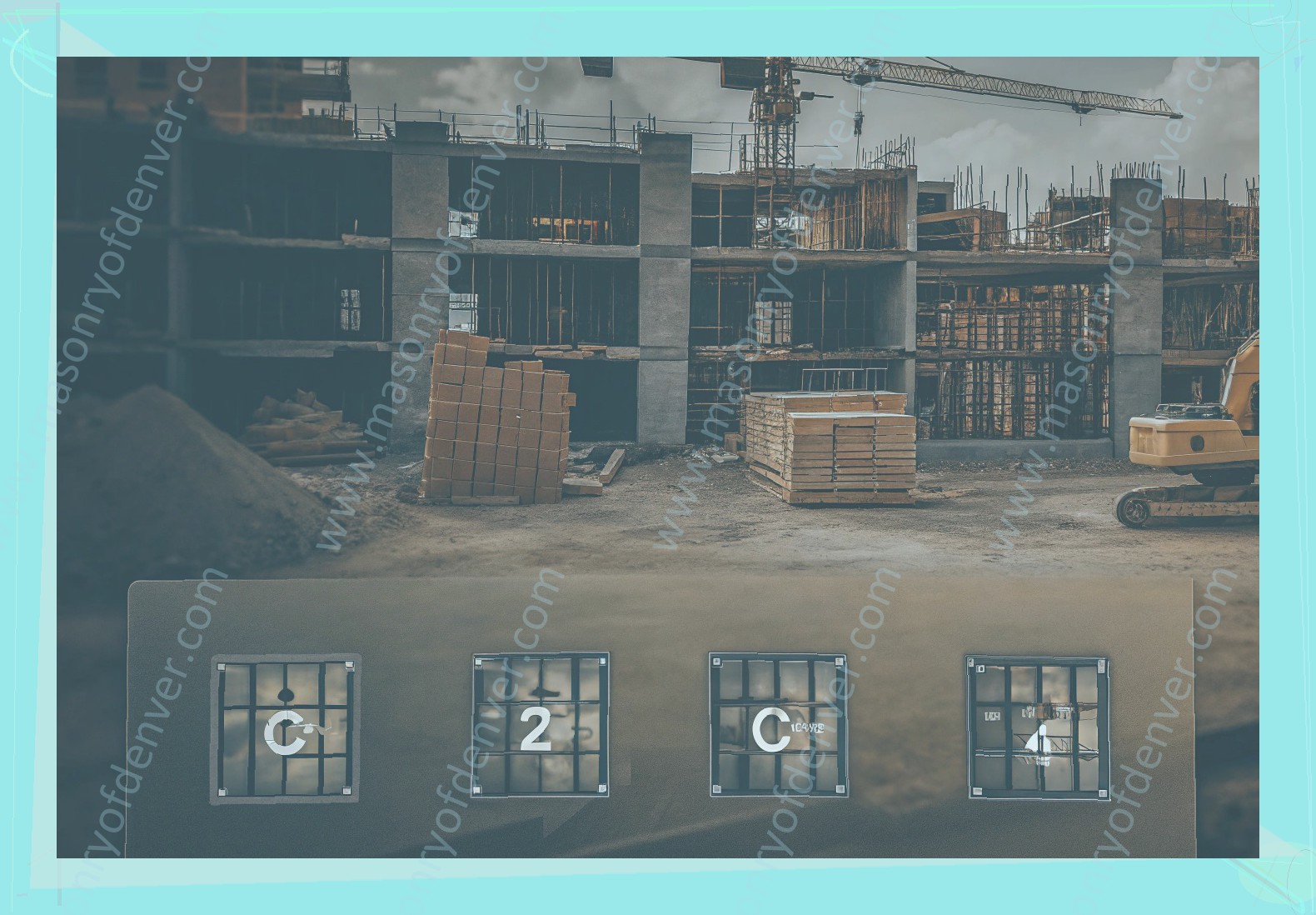What is a Cost Plus Construction Contract?
Cost Plus Construction Contract- Definition and Characteristics
What exactly counts as a cost plus construction contract? Well, one of the hallmarks of this type of contract is that the contractor agrees to handle all of the materials and labor necessary to complete a construction project, and will receive materials, construction, and labor costs, plus an additional percentage of costs, or a guaranteed maximum price. In this way, as the homeowner, you are agreeing to pay for the cost of construction, plus overhead and profit. Cost plus contracts may include specific allowances regarding the amount for which the owner will pay for permitted, field-tested labor and materials, but in general, the owner will pay whatever it costs to get the job done, as long as it is under a general maximum price .
There are several characteristics of a cost plus construction contract that set it apart from other types of contracts:
This kind of contract is different than a fixed bid contract because with a fixed price contract, the contractor will give you a set price for the job. This makes budgeting easier, but since the contractor has an incentive to jack up his costs to increase his profit margin, it is also important that you get the work done by a reputable contractor. Fixed price contracts are also different from unit price contracts, which are most often used for road construction contracts. Unit price contracts involve the contractor providing a price for a specific unit of work, such as the price per cubic yard of excavation. On a unit price contract, the price is based on an estimated quantity and not a lump sum.

Advantages of Cost Plus Contracts
The benefits of using Cost Plus Construction Contracts are numerous. One of the primary advantages is the flexibility it provides. For instance, if during the course of construction it is discovered that there is a significant amount of mold in the existing walls of a home, the cost plus method allows for the immediate remediation of the mold infestation without overextending the budget. Generally, this would not be permissible under a fixed-price contract.
Another important benefit to the cost plus method relates to scope increases and decreases. For example, say a developer wishes to build 12 apartment units, but the developer cannot obtain approval from the local municipality to build more than 8 units. Under a fixed price contract the developer may be out hundreds of thousands of dollars in design fees before deciding to move forward with just 8 units. However, with a cost plus method, it is very easy to stop the work on the project, save the design fees and simply build the eight units. Finally, cost plus contracts provide a high level of detailed accounting throughout the course of the project. This results in maintaining high levels of contract compliance throughout the life of the project.
Disadvantages and Considerations
Cost plus construction contracts are often preferred by contractors for their possibility of higher profit margins and fewer responsibilities to ensure the scheduled completion of the construction project. However, underwhelming economic conditions and other circumstances have made it so that design-build construction projects have become much more common than they were in years past. This is because design-build construction helps to make sure that each employee adheres to the construction schedule, which can ultimately gamelist the costs of a project.
However, as such, this has diminished the use of cost plus construction contracts even further. In order to provide for budget predictability and discipline, most owners require that contractors utilize fixed price contracts, or guaranteed maximum price contracts, through design-build agreements. As such, contractors looking to engage in the use of cost plus contracts should keep in mind the following considerations:
- Budget unpredictability: These types of contracts can produce cost overruns due to a number of factors, including field changes and late design changes, as well as market fluctuations that are beyond the contractor or owner’s control that may be evidenced by rising labor wages or materials costs.
- Time and material profits: Since the contractor can have a number of line items that can gather costs, including those from project delays, the contractor stands to gain a greater profit than with a fixed price contract, especially if the project includes many discontinuous tasks.
- Questions of honesty: An owner may end up paying more for a project if a dishonest or deceitful contractor conducts the work. The contractor may be more likely to use defective materials, cut corners in the work, or increase the amount of unused or wasteful materials included in the project, which may have never been used or which would have allowed for savings on the project.
Cost plus construction contracts may have some drawbacks for the participants of the contract.
Key Elements for your Cost Plus Contract Template
Essential Components of the Cost Plus Construction Contract Template
Cost categories: It is generally advisable to specify which cost categories will be covered by the reimbursable costs. These categories may include the following: labor costs, materials costs, subcontractor costs, overhead costs, markups, fees, site overhead costs, design fees, profit, management, equipment, transportation costs, and other specified costs.
Fee structure. The fee structure in a cost plus construction contract can be structured in multiple different ways. For example, it can be a fixed fee for certain costs, tiered fees depending on the amount of the costs, percent of the project cost, percent of the estimated labor costs, percent of the estimated material costs, percent of the estimated labor & materials, a percent of paid labor costs and materials, a percent of paid labor costs and overhead, and by negotiation.
Markup. Markup is a common fee structure in cost plus contracts. In this structure, the contractor adds a certain percentage (typically 3-10%) of overhead and profit on top of the reimbursable costs, marking them up for compensation. There are pros and cons to using markup; this structure can incentivize contractors to use their resources more efficiently, as costs saved on labor and materials directly reduce the final price. However, markup structures can lead to excessive costs for the contractor in the event that costs grow decentralized by large amounts.
How to Prepare a Cost Plus Construction Contract
A cost plus construction contract form should first be decided on (if any) before drafting a contract and whether the form should be modified or drafted from scratch. If the contractor has a form cost plus construction contract, the next step is to modify it (if needed) to ensure that all appropriate terms and conditions of the job are set forth. If there is no form cost plus contract in place, then the contract should be drafted from scratch.
If a contractor is modifying a cost plus construction contract, or drafting one from scratch, the contractor should first gather all the available information for the job, and then organize it.
For example, the contractor should gather the following available information for the job, as applicable: existing plans, notes, addenda, sketches, outline, clarifications, field notes, specifications, et cetera. The contractor should list each item of work the contractor expects to perform. The contractor should also list each item of work that will require premium time pay (i.e. overtime pay or holiday pay, for example).
The contractor should also list the following items of work: (a) work requiring special or additional workers (such as if more than the normal amount of labor is expected to be required on account of a short schedule); (b) work for which other persons are expected to perform who are not the usual crew (i.e. specialists); (c) work that is difficult or complex, and is likely to require additional supervision; (d) work for which premium pay may be charged (such as overtime and holiday work); (e) work for which scaled material prices are expected to be used (such as electrical or mechanical materials); and (f) work for which unit prices are expected to be used (such as electrical or mechanical work). There may be other, similar items of work to be listed too, of course.
Before drafting a cost plus construction contract, or modifying another form, the contractor should do the following: (a) review all the items (cost, units, labor rates, labor rates for each worker that may perform the work, material costs , et cetera) for accuracy and/or required adjustments or changes; (b) confirm all the items will be measured properly; (c) confirm the above items with the owner; and (d) confirm/modify (if necessary) the cost, units, labor rates, and labor rates for each worker that may perform the work, material costs, et cetera. As necessary, the contractor should handle these steps with the owner/anyone else reviewing the cost plus construction contract in as much detail as the owner/anyone else needs.
For example, do all the unit costs for labor seem accurate? Do they need to be changed? On a long, major job, will the same worker be available throughout the job? Are the per unit costs for a particular supplier accurate? Can the actual costs be made to reflect this?
Also, is the cost chart set up to avoid confusion over units? (For example, an "hour" is not the same as a "man hour," and isn’t worth the same amount of money – and the two different types are not interchangeable.) Is the cost chart set up to reflect compliance with the Davis-Bacon Act or another prevailing wage law?
Each specific component of the cost plus construction contract needs to be reviewed to ensure all the applicable or required requirements have been satisfied, both under general law, and under any specific laws that may apply. For example, the applicable Davis-Bacon Act requirements, or other prevailing wage law requirements, should be checked. Generally, contractors should check the following items:
(a) whether the contractor has permitted the agreed upon system to be used; (b) whether the agreed upon system is correct; (c) whether the agreed upon system is appropriated for the jurisdiction and the project; (d) whether the agreed upon system complies with Davis-Bacon Act requirements or other prevailing wage law requirements; and (e) whether each item listed is "unique" enough to be billed and paid separately, or be compared to during inspections – for example, there may be 6 "finger braces" included in a unit of work, but if each "finger brace is identical, and no new materials are used, the "finger braces" should be included in a single line; and (f) if the contractor uses a piece rate, whether the piece rate and calculations are accurate and appropriate.
Cost Plus Contract Management Best Practices
Cost Plus contracts can be a tricky proposition for owners, because they place a significant level of trust in the contractor, who is given a blank check to be made whole. In order to avoid misunderstandings and project delays, there are a few best practices that owners should implement during the life of the project to ensure that costs are being kept in check and that the project is moving forward as intended. The single most important step an owner can take with a cost plus contract is to properly vet the contractor before entering into a construction contract. A contractor undergoing a vetting process should be able to demonstrate that it is trustworthy and competent with respect to billing and tracking costs. Because a good contractor will be able to provide you with the information necessary to make this determination, a vetting process does not need to be complicated. A contractor’s financial statements (preferably audited) and overhead rate will be a critical piece of information, and should be scrutinized to make sure these numbers are consistent with what would typically be expected for a contractor of its size. Second, all existing and previous insurance claims should be disclosed and thoroughly investigated. Finally, the owner should speak to existing and former customers to ensure that they have not had similar experiences with the contractor. The owner should then make an informed decision as to whether to proceed with negotiation and enter into a cost plus contract with the contractor. If the construction contract is already in place, but performance under it has become difficult, the owner may want to consider a retention. Consistent with the risk allocation goals discussed above, a retention could be set at a percentage equal to the lowest applicable insurance deductible for the cost plus contract. This strategy may help focus the contractor’s attention on having certain project issues addressed, while also leveraging insurance to incentivize the contractor to use due care when dealing with work outside the scope of the cost plus contract.
Once the contract is in place, the owner should confirm that the contractor has established a robust method to accurately and timely track costs associated with the project in anticipation of providing documentation to the owner. This includes ensuring that the contractor properly tracks both direct project costs and indirect costs associated with running the contractor’s business that are appropriate to be charged to the project. All costs submitted to the owner should be itemized in a way that easily allows for the costs to be cross-referenced with the contractor’s original bid to identify any negotiated changes. The owner and contractor should establish a protocol for submitting and reviewing change orders and other cost documents. This protocol should include addressing unforeseen conditions once the work begins. To the extent the cost for a change order will exceed a certain percentage of the original bid, the cost order should require prior owner approval. Additionally, the owner should require copies of all subcontracts so that the billing by the contractor can be cross-checked with the amounts paid to subcontractors. Copies of the contractor’s insurance and tax returns should be part of the project documents. Finally, the owner should be diligent in keeping copies of all of its own internal project records.
Legal Aspects and Regulation
When entering into a cost plus construction contract, it’s essential to understand the legal implications involved. Compliance with legal and regulatory requirements is not only critical for the success and efficiency of a construction project, but also for avoiding potential legal disputes. In this section, we’ll discuss the necessary steps to ensure compliance with local laws and regulations, as well as how to address potential legal challenges should they arise.
1. Understanding Local Laws and Regulations
The first step to ensuring compliance with local laws and regulations is to have a comprehensive understanding of the federal, state, and local regulations that may apply to a particular project. For example, all parties should be familiar with OSHA requirements, local building codes, and any other relevant state regulations that govern the construction industry.
The owner should also check with their local government to see if any additional permits or licenses are required for the project to be undertaken lawfully. Developers or contractors should also be aware of any required licensing that may apply. It’s critical to research these requirements thoroughly because the intervals governing such obligations are generally strictly enforced with little leeway for non-compliance.
2. Potential Legal Challenges
There are three common potential legal challenges that parties to a cost plus construction contract should be prepared to address:
Oral agreements: While a written agreement is not technically required by most state laws , it is highly recommended. In the event that there are disputes between the parties, a written agreement can serve as the critical piece of evidence to help resolve the issue in a manner favorable to all parties.
Payment disputes: As described earlier in this article, establishing a clear guideline by which allowances are to be calculated, verified, and approved can serve to reduce the number of disputes related to payments and reimbursements. Clear and concrete guidelines are critical to this process.
Termination of contract: As with payment disputes, a clear means by which the contract between parties may be modified or terminated should be outlined in the written agreement. The legally minded developer or contractor should ensure that force majeure clauses are drafted carefully in order avoid wrongful termination claims.


